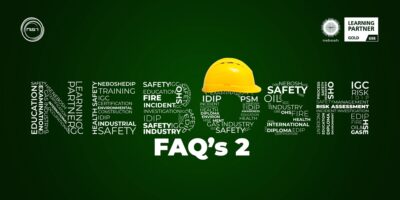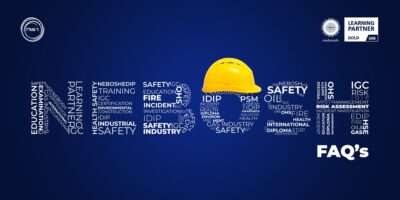Why choose NEBOSH IGC?
The NEBOSH International General Certificate is a professional standard of knowledge and skill that can be applied to a variety of HSE sectors. This certification allows candidates to demonstrate their knowledge of workplace health and safety and gives them an advantage when applying for new positions or continuing their education at postgraduate levels to meet the demands of industry standards and regulations for workplace competency. The certification process ensures that those who have completed the NEBOSH International General Certificate (IGC) have the necessary knowledge, skills, and competencies to provide effective emergency services in any environment, across multiple disciplines and sectors, and at various levels, from the individual to the organisational level, as well as in a variety of geographical areas such as urban, suburban, rural, isolated, remote, and/or natural environments.
This OBE examination pattern is more effective as this kind of examination prepare learners to face and solve problems in their workplace rather preparing themselves with the theoretical section. After having completed the NEBOSH IGC course, learners would be excelled in handling occupational health and safety management plans for their workplace, ensuring a safe and healthy working environment. NEBOSH OBE persists to be a standard qualification that is trusted by organisations all over the world, and its assessments with OBE are rigorous.
NEBOSH IGC (Level 3): The NEBOSH International General Certificate in Occupational Health and Safety (IGC) is one of the most generally recognised health and safety certifications. The newly updated IGC syllabus focuses on the core topics that ensure worker safety.
There are two units in the new IGC exam. IG1-Management of Health and Safety Risk Assessment – Practical Unit – IG2.
In addition to theory, IGC includes a practical assessment so that learners can gain real-world experience in applying safety concepts in the workplace.
IG1 is for determining what you know, while IG2 is for determining what you can do. To obtain the NEBOSH IGC qualification, you must pass both of these units. Learners would be given 24 hours to complete IG1. And the pass mark for IG1 is 45%, and the practical session is not graded, but if successful, it will show as ‘PASS’ if you are able to meet all the criteria set by NEBOSH. If not, it will display ‘REFER” indicating that you were not able to meet all the criteria set by NEBOSH. In order to complete IG2 successfully, learners must finish learning IG1 concepts thoroughly. You can refer to the grade borders below:
75+-Distinction
65-74 – Credit
45-64 – Pass
0-44 – Refer
IG1– IG1 unit is an Open Book examination (OBE).
What is OBE?
OBE stands for Open Book Examination, in which students have access to study materials. This online IGC course is designed in such a way that students will be able to take exams in their own place and complete the modules without any hindrance or delay due to geographical constraints or other factors. Thus, there are no restrictions on the NEBOSH IGC course from anywhere in the world, and you can take your exam whenever and wherever you want!
However, they cannot use the same points and must instead apply only the concepts they have learned to the scenario-based questions asked in the examination. To put it simply, even though you are not invigilated and are free to use any resources, website notes, etc., you cannot directly copy paste those notes but must instead refer to terms, meanings, concepts, ideas, and so on. Furthermore, you should not discuss or seek assistance from others.
Scenario-based questions:
As mentioned earlier, IG1 exam paper is presented with realistic scenario-based questions. You will then need to complete a series of tasks based on this scenario. Each task will consist of one or more questions. Answer all of the questions and before answering them read the scenario and understand it well. Your responses to all the questions must be based on the given scenario.
Scoring:
Marks will be shown to the right of each question or portion of a question to help you determine the length and weightage for that specific question. More keywords or technical terms, such as hazards, identification, risks associated, assessment, and so on, would help structure your responses. In general, one point is awarded for each technically demonstrated point that is correctly demonstrated.
Make your answers appropriate and not long, by including relevant, main points and attempting to connect with the given scenario. Examiners will be able to understand your answers and assign grades more easily as a result of this. In total, you can use 3000 words.
Note: Using answer template is recommended.
IG2- Risk Assessment –
Unit – 1:
In this unit, you will be asked questions about different workplace hazards, the risks associated with them, and your solutions to prevent or mitigate those risks. The safety knowledge theories you have studied in IG1 would assist in answering these practical questions. In your assessment, you must include clear details like name, location, number of employees in the organisation, routine work, shifts, products manufactured, services, activities undertaken, time of risk assessment, what hazards were identified and how, members met during hazard identification and risk assessment, and your recommendations for control measures or mitigation solutions like training, supervision, etc. Then you must explain the methodology behind your risk assessment. Most importantly, all the details learners include in this risk assessment must be realistic and correspond with the actual workplace risks. They must also be presented in a concise format, and the word limit explaining these details should not be too maximum and minimum.
Unit – 2:
The abovementioned things would also help in attending the part 2 section of risk assessment successfully while attending the five columns.
- You must identify and investigate at least ten hazards in your workplace from five different hazard categories, like fire, chemical spill or release, manual handling, workload, ergonomics, and so on.
- Evaluate who might be harmed as a result of the hazards you’ve identified, such as employees, managers, and so on, and brief those on potential scenarios. Working long hours, for example, can cause worker fatigue, which can result in an accident or make them sick in the long run.
- What are the existing control measures?
- What are the additional prevention and mitigation measures that could be added?
- Provide a timeline for completing the actions taken for the additional prevention/mitigation measures that you suggested.
- Role of the person in charge of completing each action.
Unit-3:
Unit 3 of risk assessment would require learners to produce three highest priority/immediate action-needing hazards, as well as justifications for why those three actions are urgent. Furthermore, it must be based on moral, legal (ILO-based), and financial arguments for those actions.
Unit-4: (Check, review and communicate):
Here, you must specify to whom and how the risk assessment findings will be communicated. Make your terms as specific as possible. For instance, if it needs to be communicated to the general supervisor, manager, staff, and so on.
After you have finished the exam, you can use the assessment checklist to ensure that your assessment meets the criteria outlined in the assessment pack. If you fail to include any of those details or write less than expected (for example, writing down two actions instead of three, nine hazards instead of ten, and so on), you will be considered to have failed to meet the requirement. Thus, you will be unable to pass IG2.
Your assessment can be handwritten or electronic. However, NEBOSH recommends an electronic assessment. Though there is no particular time limit for this assessment, 3 hours of timing is recommended.
NOTE: As mentioned earlier, copying, obtaining assistance from a tutor/someone, and submitting someone else’s work are all examples of malpractice.
After completion of the NEBOSH IGC Exam, there will be a closing interview session for each candidate. This short closing interview is to check whether the assessments have been made on their own without anyone’s assistance.
The results will be announced within 50 working days after the examination. And, certificates will be provided after 20 days of the exam result, and the certificates will be issued to the candidates who have passed the exam.
Why NIST:
NIST is India’s first gold-learning partner. We are a service-based organisation providing health, safety, and environmental guidance through qualifications, training, publications, and events for those involved in the design, construction, operation, and maintenance of buildings and other workplaces in the built environment, including hazardous areas, construction sites, offshore installations, mines, power stations, and chemical plants, among others, working in various professions.
Call us at + 91 8056000530 or email us at info@nistinstitute.com so that we can help you get started.














Leave a Reply